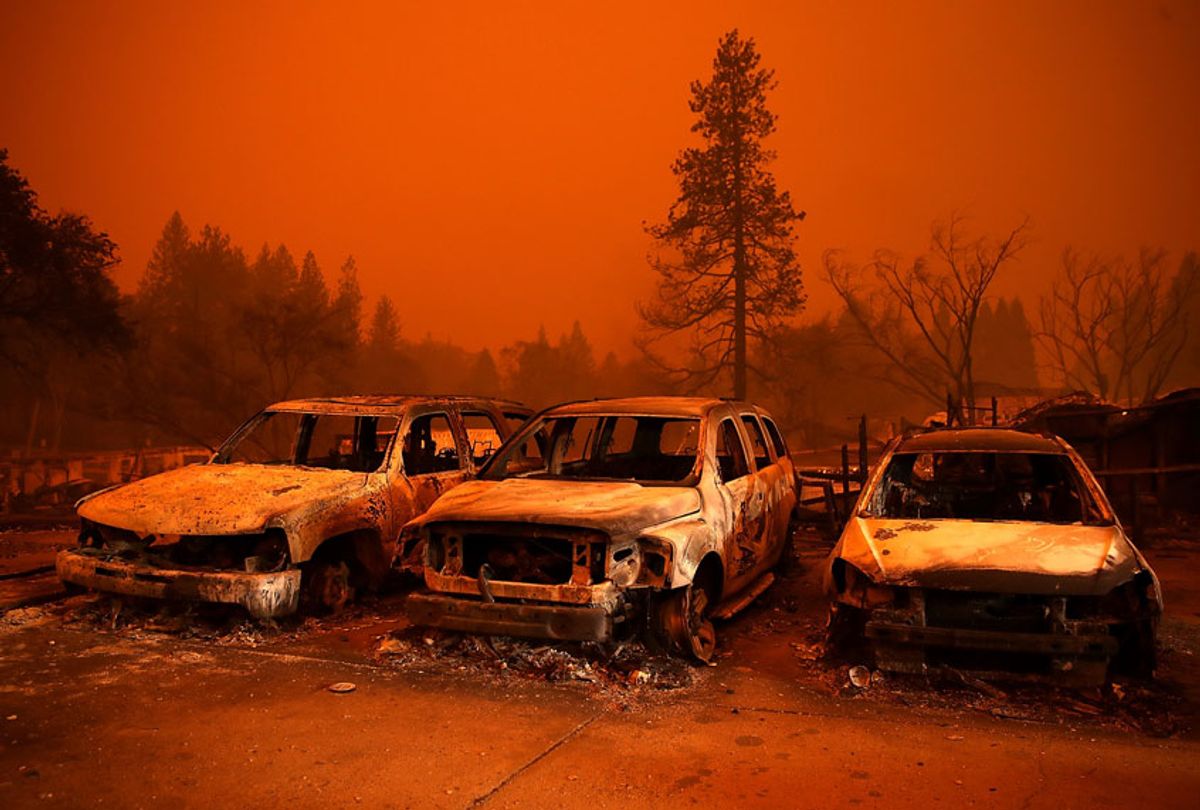California burns. Climate change and forests thick with trees, duff and brush make the fires deadly. But the answer is not to stop fires. Frequent small fires are not bad actors in this landscape. They clean and renew. Much of California’s landscape is not only fire prone, it is fire adapted. Many plants are fire followers, blooming only after fire or sprouting prolifically when burned. Redwood also responds to fire, resprouting from its base again and agin, making immense new trees from old ones. In California, we might learn again to give thanks for fire.
The people who lived here when the Europeans came – and who had prospered in California for millenia prior – thrived on a regular diet of small burns. They set fires at particular times of year – at different times depending upon where they lived -- guided them in desired directions, measured and adapted to changes in the wind, and so maintained a landscape of open forest that was both healthy for the trees and useful to the people who lived among them. It is estimated that every year the California Indians set about 6-16% of what is now the state on fire. Sometimes, they had to wait a little longer than they would have, because not enough flammable biomass had grown back to start a fire.
The first Europeans on the scene noticed the burning even from their ships. In 1542, Juan Rodríguez Cabrillo commanded the first Spanish fleet to reach what was then called Alta California. There was so much smoke on the shore near present Santa Monica that he named the place Bahía de los Fumos, or Smokes Bay. Half a century later, Sebastián Vizcaíno was on a voyage to scout harbors along the coast. He saw fire everywhere. Near San Diego, he reported, "The Indians made so many columns of smoke on the mainland that at night it looked like a procession and the daytime the sky was overcast.” In 1772, an overland party had trouble feeding their horses and cattle, because the hills had been recently burned.
Did these practices destroy the land? Far from it. The Indians prospered. The population density in the future state was higher than in any other part of America north of Mexico. Their woodlands and meadows were more diverse, not less, and they offered food and living materials for people, animals and plants. Europeans were shocked by what they saw. Not only did the forests have open understories, like parks, but they were full of game. Sir Frances Drake gaped at the spectacle: “Infinite was the company of very large and fat Deere, which we saw by thousands…besides a multitude of Conies by farre exceeding them in number.”
In a good oak grove, it was possible to gather in two weeks enough acorns for 2 to 3 years’ staple food. Burning kept down the weevils, cleared the ground of competitors, and opened the way to the sky for flowering and fruiting. To help the process, young people climbed into the oaks to knock on the branches with sticks. They dislodged the good acorns for collecting, while getting rid of deadwood and weak branches.”Knocking wakes the tree,” they said They brought better light to all the branches and so increased fruiting. Many Indians in the state claim that their grandparents’ orchards bore annually, like the Europeans’ apple trees. People seldom went hungry. It was the most affluent culture that that land has known.
Food was not all they harvested. Burning shrubs like sourberry, redbud and buckbrush, hazel, and willow caused masses of straight new sticks to arise. With few lateral branches and long clean wands, these were the stems that made the baskets used for everything from storage and backpacks to serving and cooking (The Indians cooked in water tight baskets, throwing in hot stones with acorn meal and water.) An ordinary household had at least 40 or 50 baskets, not to mention sandals, arrows, game pieces and other things made from the straight resprouting stems.
The frequent, low-intensity fires cleared out the underbrush and burned off deadwood, without damaging the larger trees. It reduced the fuel load that might lead to a massive conflagration. Little fires prevented bigger ones. Then, in 1911, a federal law forbid burning. For more than a century, you could be arrested if you set a fire. The Karuk in northern California have recently got permission to start controlled burning once more. Their small fires kill the Douglas fir seedlings that would otherwise overtop and shade out the tan oaks. They clear brush, rotten fruit, and dead and dying trees. The ash stays on the ground and feeds the soil. The season after one burn, rampant lightning fires struck the tops of big trees in the treated forest. The crowns went up like torches, but when the flames reached the ground, they petered out. Maybe instead of correcting the indigenous peoples, we should let them teach us. The California Indians with their thankful burning cared for the people and the land. We need to learn to live like this again.
# # #
William Bryant Logan is the President of Urban Arborists, a faculty member at the New York Botanical Garden, and author of the forthcoming book "Sprout Lands: Tending the Everlasting Gift of Trees."



Shares